Ainslie Harrison and Casey Mallinckrodt
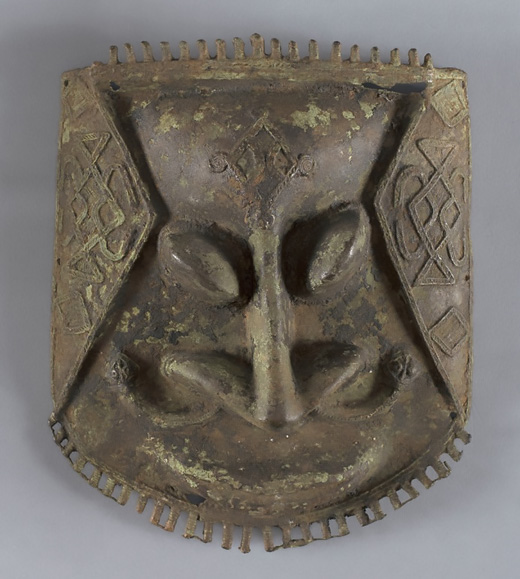
We (VMFA conservators Ainslie Harrison and Casey Mallinckrodt) recently travelled to Washington DC with the VMFA’s Yoruba Ogboni Society Plaque (#2000.97) to consult with Dr. Carla Dove in the Feather Identification Lab at the National Museum of Natural History. Dr. Carla Dove generously agreed to take a break from her primary work identifying birds involved in aviation accidents (AKA bird strikes), to sample and evaluate the feathers embedded in the accretions on the Ogboni plaque (check out the amazing work Dr. Dove does on Science Friday!).
The plaque, which is a copper alloy casting in the shape of a stylized face, comes from the Yoruba culture in the area of present day Nigeria and Republic of Benin. Believed to have been created in the 19th century or earlier, the plaque has been identified by its design and symbols as an Ogboni Society object. The Ogboni Society is one of the Yoruba’s most important political and religious institutions, consisting of the eldest and wisest male and female members of a community.
A fascinating aspect of the plaque is that it is covered in a brown accretion with a variety of particles and fibers embedded in this layer. The presence of this coating on the surface suggests the plaque may have been used in an altar or shrine context where offerings were poured over it. In Ogboni rituals, certain symbolic natural substances, especially animal blood (sheep, tortoise, pig, snail, cockerel/rooster, pigeon, and duck) were often poured over ritual objects and initiates (Williams 1964). And in fact, analysis of the brown accretion using FTIR revealed the presence of a proteinaceous material, matching very closely with dried blood. Prior examination by conservators of our Ogboni society plaque also revealed the presence of small feather fragments embedded in the brown accretion at the bridge of the nose. It was these feather fragments that we hoped Dr. Dove would be able to help us identify.
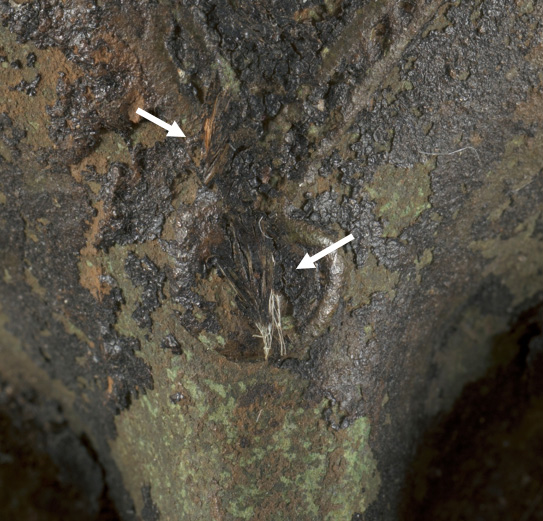
When we arrived at the Feather Identification lab, we first looked at the plaque together with Dr. Dove to discuss the process of sampling and identifying the feathers. She then examined it under the microscope to see if there were viable areas of feather sticking out of the accretion that could be sampled. Lucky for us, there were several areas to sample including a previously undetected orange feather just to the upper left of the white feather located on the bridge of the nose (see arrows in image above). For microstructural identification of feathers, Dr. Dove explained that she needed only a few barbs (the thin filaments that branch off of the feather shaft) in order to compare the features with known reference samples. With expert skill, Dr. Dove managed to remove these tiny samples from the exposed feathers and permanently mount them on glass microscope slides.
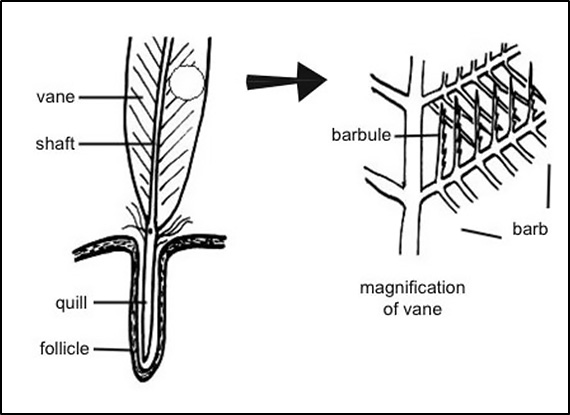
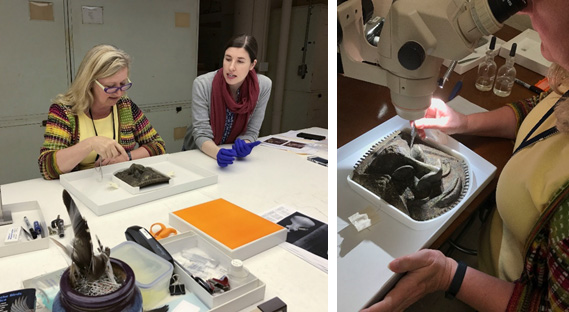
Dr. Dove then examined the slides of the removed barbs with us under the microscope using a variety of the lab’s reference slides for comparison. Unfortunately the white feather fragment did not contain enough diagnostic features to make a match, but Dr. Dove quickly noted key micro-features on the orange feather sample such as the slightly expanded nodes with short spines that were uniformly spaced. Other diagnostic features included the presence of pigment at the nodes. This hinted to Dr. Dove that our sample could be from a Galliforme (Fowl-like bird). Upon comparison with a sample of Red Jungle Fowl (Gallus gallus), it seemed we had a close match!
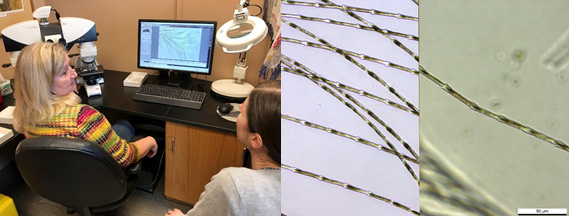
We then headed into the collections to look at bird specimens and Dr. Dove showed us a drawer full of Gallus gallus or red jungle fowl. The red/orange feathers on these specimens matched the orange tinged feather fragment in the accretion. Additionally, the description in the literature of cockerel (rooster/ male chicken) being used in Ogboni ceremonial contexts gave us added confidence in this identification.
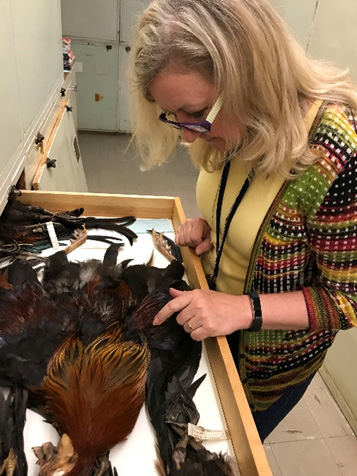
After a successful day of investigation, we returned to the VMFA with the plaque and a deep appreciation for the work Dr. Dove and her lab carries out. Looking at just a few microscopic pieces of feather, Dr. Dove was able to add greater clarity to one of the many layers in the story of the VMFA’s Ogboni society plaque.
REFERENCES
Williams, Denis. 1964. “The iconology of the Yoruba Edan Ogboni”. Africa. 34: 139-166.